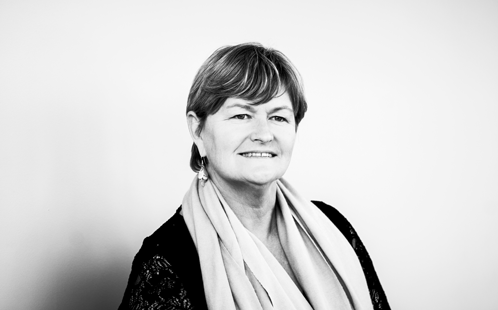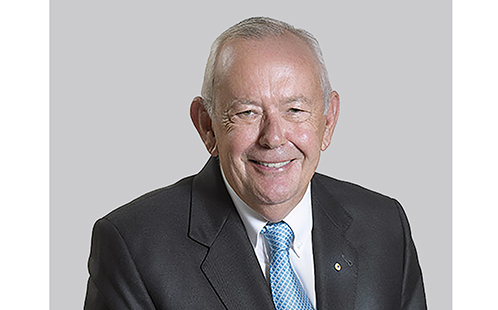The future of healthcare: not just the absence of disease
The following opinion piece was first published by The Australian (31/10/18). It is authored by Professor Annemarie Hennessy AM, Dean of the School of Medicine at Western Sydney University and a renal and obstetric physician with a research interest in hypertension and hypertension in pregnancy.

In research laboratories across the country, innovative medical researchers are working vigorously towards developing better treatments and a better understanding of hundreds of diseases. The potential of this work to have a major impact on how we design and deliver health services can seem a little overwhelming. But in order harness that potential, I know there needs to be a shift in how we define disease and how we translate research into real-world solutions – to ensure that when scientific breakthroughs and advances are ready for patients, they are welcomed into a system driven by a holistic and personalised approach to health.
To facilitate such a system, we need to first start thinking of health not just as the absence of disease, but as empowered individuals living in actively supportive, engaged and thriving communities. To consider health in such a holistic way forces us to also think of treatment and health delivery in a holistic way – to match robust science, with personalised and effective treatment delivery that responds to community needs, and to invest equally in prevention. Work that we do outside the lab allows us to better understand what are sometimes described as the social determinants of health and a region’s diversity, and in doing so deliver better health outcomes for a community. Together, these approaches allow us to develop the best health policies and models of care needed for the future.
For example, when I first came to South Western Sydney there was a high rate of mothers with seizures after birth. Instead of looking to a new treatment or drug development to address this problem, our first point-of-call was to think about ‘how to define the problem?’ To answer this initial question, I gathered a team that included all sorts of clinicians and scientists including midwives, nurses and doctors, working together with our researchers. With expert input and a collaborative approach, we discovered that a solution could be found in ensuring a mother’s blood pressure was under control in the lead up to giving birth. Now, just because we had identified a solution, it didn’t mean the entire problem was solved. This solution still had to be implemented. For this to happen, we had to ‘treat the system’ and identify and work with all areas that were involved in providing medical care and support for a mother and a baby, and then engage them in the implementation and adoption of that approach. It was a slow and measured change – but now South Western Sydney has the lowest rates of seizure in mothers in Australia. As this example highlights, sometimes redefining the problem – with a multidisciplinary team – and undertaking essential research is an excellent beginning. We can then influence the solutions and translate the results to a better health outcome.
Consideration of the holistic and personalised care of a patient is also vital, as no matter how good the drug development, the right treatments need to be given to the right patient at the right time. Beyond this, it is important that the adoption of a personalised care approach doesn’t diminish the level of care a patient gets – even when care is personalised, a patient should still have access to the latest, multi-million-dollar drug if that’s what’s required.
Bridging the gap between drug development and drug delivery is one specific example of disease prevention and treatment relying on partnerships, and critically working in these partnerships without losing sight of the individual patient who will be at the centre of that care. A good example of partnership with a hospital would see a team being able to work with researchers to determine what is needed for a particular patient, and it being delivered efficiently. At Western Sydney University, the researchers and clinicians in the School of Medicine have the privilege of working, for example, with our partners at the School of Nursing and Midwifery, Australia’s leading nursing school, for a better understanding of patient care from those who are interacting with them the most.
There is a saying that goes ‘you don’t want to rescue from the fire’ and in the context of health this means that prevention is always better than cure. And while we have become very good at ‘rescuing from the fire’ and addressing both physiological and systematic problems within the health system – this shift in our approach to research integrated care, one that incorporates partnerships, and a holistic and personalised approach to medicine, could not only lead to better health outcomes but also the prevention of disease in the first place. Our quest for that holy grail, as researchers and clinicians, continues to be vigorously pursued.
ENDS
6 November 2018
Latest News

Opinion: What do we lose when our old suburbs disappear?
I live on the edge of Parramatta, Australia’s fastest-growing city.

Opinion: Most bees don’t die after stinging – and other surprising bee facts
Most of us have been stung by a bee and we know it’s not much fun. But maybe we also felt a tinge of regret, or vindication, knowing the offending bee will die. Right? Well, for 99.96% of bee species, that’s not actually the case.

Western Sydney University receives transformational donation to support LGBTIQA+ community
Western Sydney University has welcomed a philanthropic donation from The Brennan Lynch Foundation.
Mobile options:

